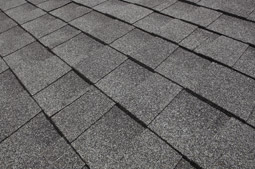
Asphalt shingles are not the only inexpensive roofing materials that quickly lose their appeal as they begin to deteriorate soon after installation. Temporary roofs are less expensive than installing a permanent metal roofing system, but they are certainly not the best investment. The risk of weather damage, loss of energy efficiency and cost of periodic roof repair or replacement, all add up to astronomical expenses and headaches over the long-term.
For these reasons, informed consumers are steering clear of asphalt, wood shake, clay, slate, concrete, and other inferior roofing materials.
Wood Shake
For centuries wood shake shingles adorned roofs throughout the United States. Wood, being readily available and inexpensive became a good option as a roofing material. The downside was the short life span, fire dangers and intense maintenance required.
The organic nature of wood is what makes it susceptible to the unsightly growth of algae and mold. The water retained in these growths leads to shingle rot, resulting in leaking. Eventually the damage to the battens and decking requires the roof to be torn off and replaced.
Clay and Concrete Tile and Slate
Clay tiles and slate are popular roofing materials in many parts of the country due to their beauty. Unfortunately, the heavy weight of these materials causes excessive strain on the structure of homes. Clay and concrete tiles have additional problems. Their highly porous nature allows water to seep in, often causing them to crack and break. The issue is exacerbated during freeze-thaw weather cycles.
High winds may leave holes in the roof, posing a more dangerous risk to the interior of the home. The sheer weight of these roofs also makes them prone to structural collapse in the event of seismic activity or fire.
Slate may be more indestructible than man-made tile, but the nails that attach them are not. These nails often rust away leaving only gravity to keep them from falling. Falling slate can be extremely dangerous and may cause costly property damage.
Other Temporary Roofing Materials
There are several other roofing materials such as rubber and composite materials being tested in the market, but many do not have a proven track record. These materials are expensive and susceptible to fade and chalk in the heat of the sun. Investing in an untested material is risky at best—this is another reason why metal roofs are the superior option in the metal roof vs. asphalt shingles debate.


 Today’s asphalt roofs are more vulnerable to damage from harsh weather and they don’t last long in areas where temperatures range from cold to hot or wet to dry.
Today’s asphalt roofs are more vulnerable to damage from harsh weather and they don’t last long in areas where temperatures range from cold to hot or wet to dry.
